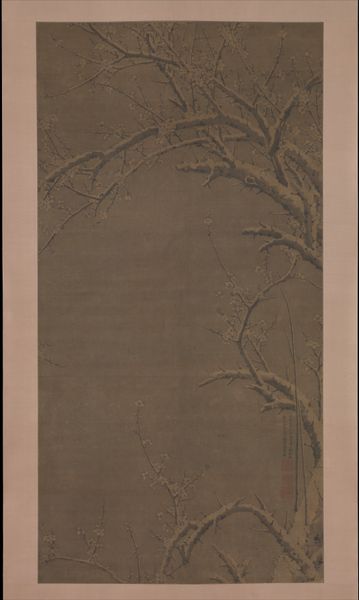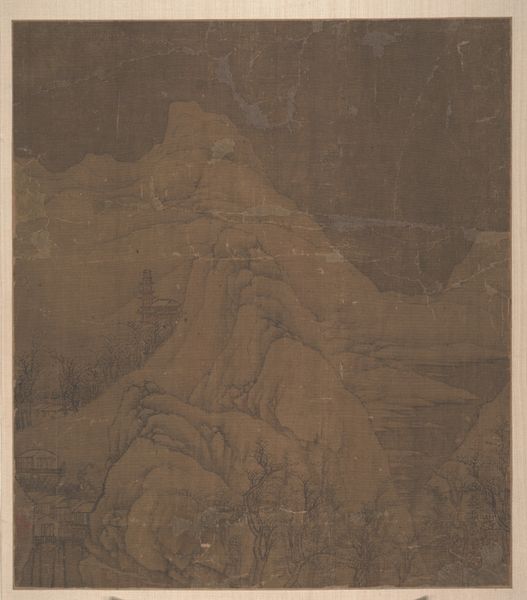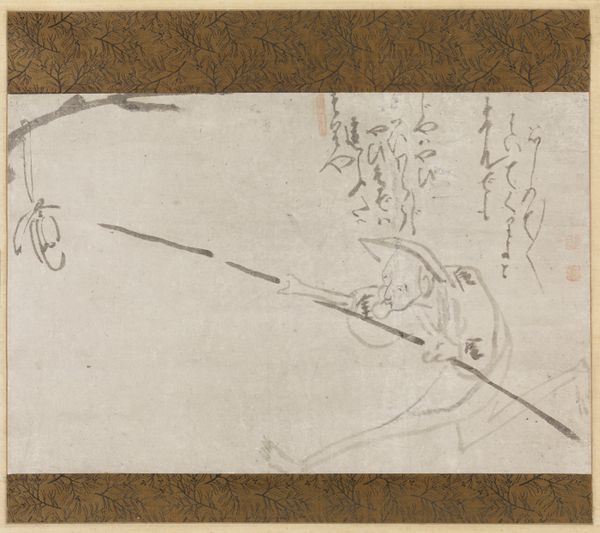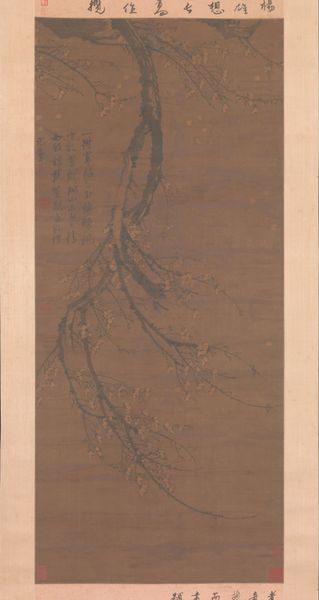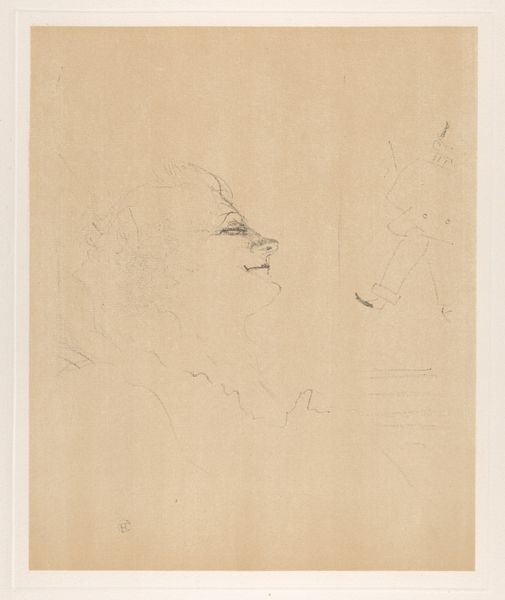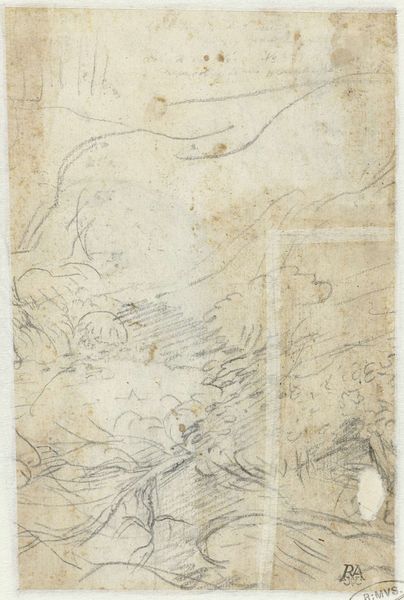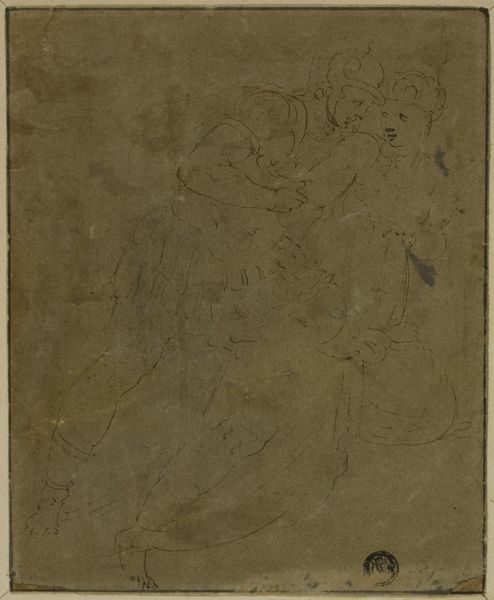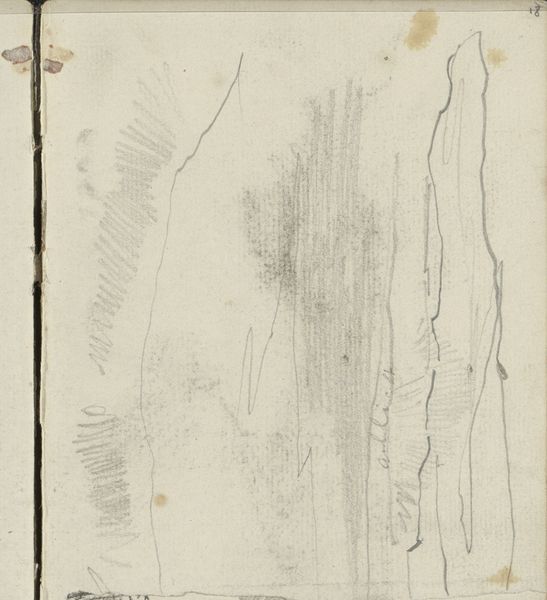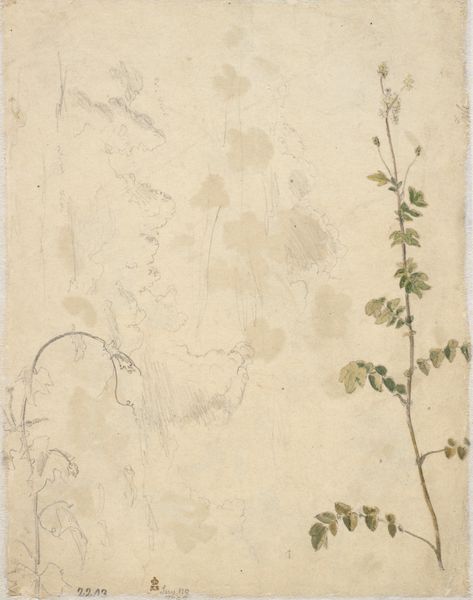
Studie til Papirius og hans moder, maleri dateret 1809 1807 - 1808
0:00
0:00
drawing, paper, pencil
#
drawing
#
neoclacissism
#
water colours
#
figuration
#
paper
#
pencil
#
line
Dimensions: 474 mm (height) x 312 mm (width) (bladmaal)
Curator: Welcome. We’re standing before "Study for Papirius and His Mother", a work on paper created circa 1807-1808 by Nicolai Abildgaard, now residing here at the SMK, Statens Museum for Kunst. What’s your immediate response to it? Editor: It's hauntingly sparse. The lines are so delicate, almost ethereal. The muted colors lend it a quality of fading memory or a dreamlike apparition. It feels incomplete. Curator: Interesting. I see that sense of incompletion too, given its nature as a study. Abildgaard's artistic process often involved meticulous preparation. You can see hints of the artist's hand in the visible under-drawings, revealing how he worked through the composition and figuration. Considering its classical subject matter, it shows that even art that can appear finished undergoes much unseen, manual labor. Editor: Right, the composition immediately struck me. Notice how the implied lines create a powerful sense of intimacy. Even with the visible reworking, there's a clear intention to evoke a strong emotional bond between these two figures. Curator: And, to build on that intimacy, consider the paper itself. It looks like a working document, with an orange paper band or repair bisecting it. That tangible repair brings a sense of history and preservation, reminding us that art objects carry a record of their physical journey. It also subtly comments on the fragile, mortal relationships represented. Editor: It does. The way that repaired paper asserts its presence in the piece's construction does a wonderful job of bringing us back to the materiality of art production. It has a formal power of line that transcends the somewhat humble materials used to achieve it. The work rewards careful viewing. Curator: Indeed. It's precisely within these layers—of initial sketches, watercolor washes, and material assembly—that the essence of artistic creation resides. By showing us this "behind the scenes," Abildgaard emphasizes the work involved in achieving a seemingly effortless neoclassical aesthetic, doesn't he? Editor: I agree entirely. Thank you for highlighting aspects of this composition I may not have seen without our discussion. Curator: My pleasure. This detailed examination has enriched my own understanding as well.
Comments
No comments
Be the first to comment and join the conversation on the ultimate creative platform.

